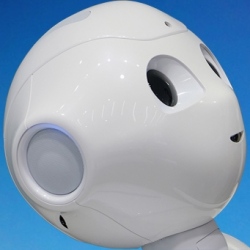
The global robotics market, pegged as a key industry in the fourth industrial revolution, is showing signs of enormous growth following the financial crisis. South Korean manufacturing, in particular, was shown to have the world’s highest density of robots per worker.
According to a Bank of Korea report titled, “The Global Robotics Industry, Current Issues and Conditions,” the global robotics market expanded by an average of 18% annually from 2010 to 2015, following the 2008 financial crisis. The study was released as part of the Bank’s overseas economic report on August 20.
It also found that industrial robotics grew by 20%, strengthened by the automatization of the automobile industry, and several service sector robotics industries, both household work and entertainment, grew by 16% each. The robotics market, due to the increase in demand for artificially intelligent robots, is estimated to grow by 13% annually from 2016 to 2019.
In addition, the density of robots within the domestic manufacturing sector increased from 171 in 2005 to 531 in 2015, putting South Korea first in the world. The concentration of robotics in manufacturing refers to the number of industrial robots for every 10,000 workers. Singapore has the second highest density of robots in the world at 398, followed by Japan (305), Germany (301), Sweden (212), and Taiwan (190), with the world average at 69.
The high density of robots in the manufacturing sector notwithstanding, South Korea’s robot technology placed behind that of many developed countries. The technology gap between South Korean robotics and robotics in the U.S. was placed at 4.2 years, wider than that of Japan and the U.S. (1.4 years), or the European Union and the U.S. (1.4 years). However, it was smaller than the gap between China and the U.S. (7.1 years).
The report acknowledged that the increased use of robots in industry had helped with an increase in productivity, but also identified that there were concerns of a decrease in the number of jobs and increase in income inequality. Therefore, as important as it may be to focus on policies to further develop robotics technologies, the report concluded that it would be necessary for the government to expand its efforts at income redistribution in order to amplify the results of enhanced productivity.
